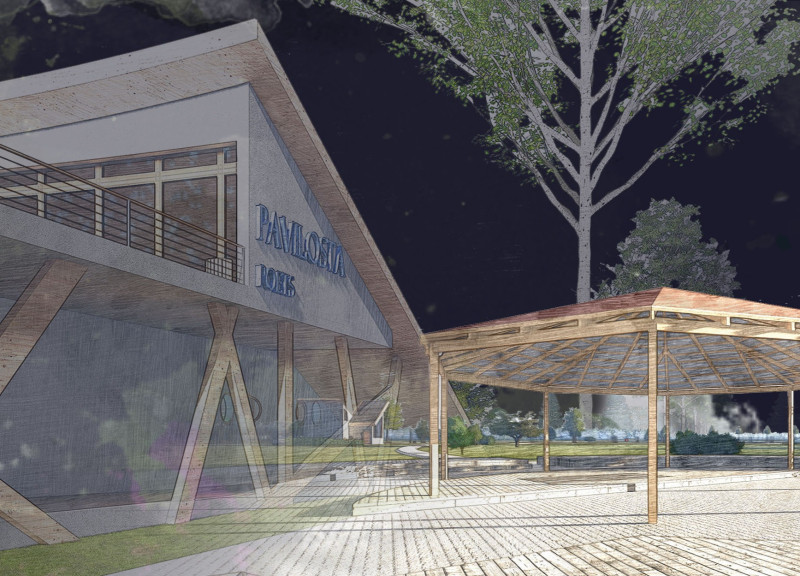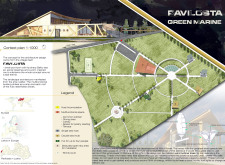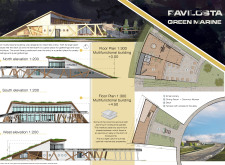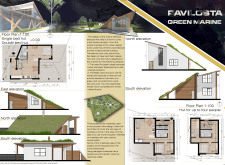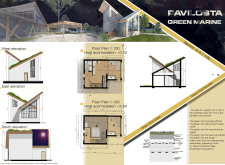5 key facts about this project
Sustainable Design Approach and Materiality
One of the defining features of the Pavilosta Green Marine project is its commitment to sustainable design. The architectural strategy incorporates renewable energy elements, particularly through the integration of wind turbines within the landscape. This approach not only provides energy for the facility but also educates visitors about renewable resources.
In terms of materiality, the project predominantly employs wood, which offers a natural aesthetic and efficient thermal performance. The use of aluminum honeycomb panels in specific structural components enhances mechanical strength while reducing overall weight. Additionally, a green roof system is implemented, which serves to manage stormwater, enhance insulation, and promote biodiversity within the urban context.
Functional Spaces and Community Engagement
The architectural layout is designed to serve diverse functions while fostering community engagement. Key spaces include a common kitchen and dining area that facilitates social interactions and gatherings. A library and areas for cultural activities, such as poetry readings, underscore the project's emphasis on community enrichment.
Accommodation is provided through well-designed huts, intended for small groups yet equipped with comfort and privacy. The design includes outdoor spaces like meditation areas and terraces to promote relaxation and social connection. Each element is purposefully planned to create an inviting atmosphere that encourages visitor participation and interaction with the surrounding environment.
Innovative Architectural Solutions
The Pavilosta Green Marine project distinguishes itself through innovative architectural solutions. The form of the building resembles a ship, inspired by local maritime heritage, blending seamlessly with the coastal landscape. This conceptual framework not only informs aesthetics but also enhances functionality, as the layout supports both communal and private experiences.
The integration of wind turbine trees represents a unique concept within the architectural design, providing energy while also serving as visual landmarks in the landscape. This aspect of the project combines art and infrastructure, making a statement about sustainability in design.
For a comprehensive understanding of the Pavilosta Green Marine project, readers are encouraged to explore the detailed architectural plans, sections, and designs. These elements provide further insights into the project’s innovative approach and functional spaces, showcasing the multifaceted nature of this architectural endeavor.


